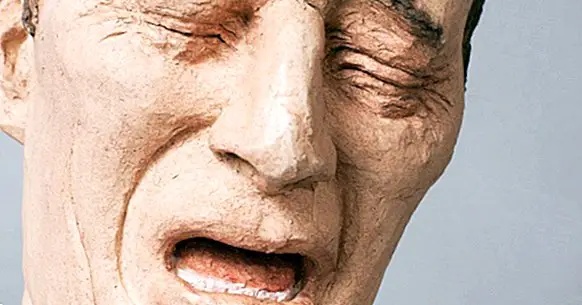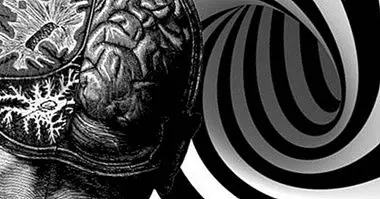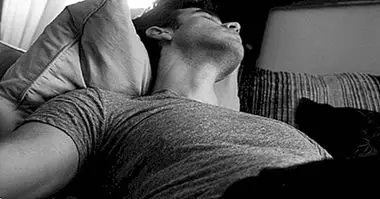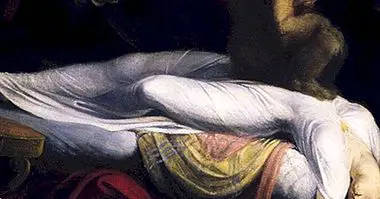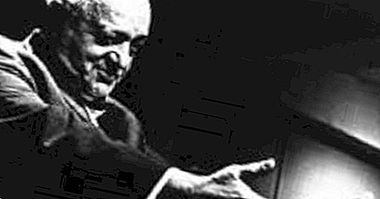Dysesthesia: what is this symptom, causes and types
The dysesthesia consists of the appearance of unpleasant, often painful sensations , which are not objectively justified by a given stimulus. In this sense it is related to other similar alterations such as neuropathic pain and allodynia.
In this article we will describe what exactly is dysesthesia and what are its causes , as well as five of the most common types of dysesthesia: the cutaneous one, which is associated with feelings of burning, the scalp, the occlusal (or ghost bite) and the genital.
- Related article: "Allodynia: types, causes and related disorders"
What is dysesthesia?
The term "dysesthesia", which comes from Greek and is translated as "abnormal sensation", is used to describe a Perceptual phenomenon that consists of the appearance of sensations of pain, burning, tickling, itching or other discomforts without intervening a causal stimulus, while other times it is altered perceptions of real stimuli.
Following this definition, dysesthesia would include, for example, sensations of pain when brushing the hair and when putting on or taking off the clothes, as well as the continued perception of tingling in the fingers or toes.
The most usual thing is that Episodes of dysesthesia occur in the legs and feet , although it is also common for these sensations to appear on the arms, on the face or as a sensation of pressure around the torso, both of the chest and the abdomen.
Abnormal perceptions can occur in a timely and brief, but this is not always the case: in some cases the dysesthesia consists of the presence of a discomfort maintained without an identifiable objective cause.
People who suffer from this symptom often report that it gets worse when they try to fall asleep, after exercising or effort and as a consequence of changes in the temperature of the environment.
- Maybe you're interested: "The 13 types of pain: classification and characteristics"
Causes of this alteration
The sensations that are categorized as dysesthesia have a neurological origin. They are often due to Spinal and spinal nerve injuries caused by nervous system disorders . In this sense many episodes of dysesthesia can be included in the general label of "neuropathic pain".
Therefore, although intuitively many people with this symptom think that the damage is located in the skin (or in another part of the body where they feel the pain), the fact is that the alteration is associated with the nerves.
Multiple sclerosis is a common cause of dysesthesia , which injures myelin sheaths, interfering in the transmission of electrochemical impulses through the nervous system. This causes the brain to have difficulty interpreting the perceptions it receives from the peripheral fibers and the conscious sensory experience is anomalous.
Other factors that are associated with the onset of dysesthesia are diabetes mellitus, herpes, Guillain-Barré syndrome, Lyme disease , strokes that affect the thalamus, abstinence from substances such as alcohol, the consumption of some medications and treatments with chemotherapy.
On the other hand, there are authors who defend that dysesthesia has a psychogenic origin; from this point of view this symptom would be classified as a psychosomatic disorder, and It has been linked to alterations such as schizophrenia and other psychotic disorders . Nevertheless, the research confirms the presence of neurological lesions in many cases.
- Related article: "Hyperalgesia: increased sensitivity to pain"
Types of dysesthesia
The scientific literature has collected different types of dysesthesia that are especially frequent or significant because of their clinical interest. Let's see what each one of them consists of.
1. Cutaneous dysesthesia
Cutaneous dysesthesia is a very common type of this disorder, since most episodes are associated with sensations in the skin. As we said previously, these include pain but also itching, tingling or burning .
2. Dysesthesia with burning
It is common for people with dysesthesia to feel a burning sensation in different parts of the body, as if they were burning. A special subtype is Burning mouth syndrome, a form of oral dysesthesia which is characterized by a pain similar to that of mouth ulcers.
3. On the scalp
Dysesthesia also usually appears on the scalp. In these cases, patients report both pain and burning and other discomforts. Technically, it is a subtype of cutaneous dysesthesia, although it has also been studied independently.
Four.Occlusal dysesthesia (ghost bite)
Occlusal dysesthesia, also known as "ghost bite" , often occurs after dental surgeries. It is characterized by an annoying sensation of forcing the jaws similar to a sustained bite and frequently causes intense pain when eating food and fluids.
5. Genital dysesthesia
More cases of genital dysesthesia have been detected in men than in women. It is usually associated with a burning sensation; When the discomfort is located in the penis, it is called penile dysesthesia, while if the burning is given in the scrotum the concept "burning scrotum syndrome" is used .

